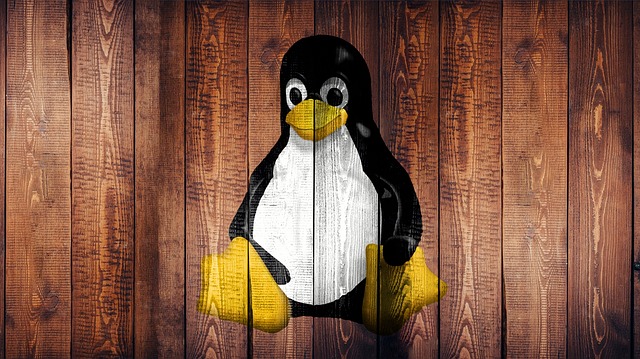The MX Linux project has rolled out a new major release, based on Debian 12, and is on its way to becoming our favorite distro.
Around this time last year, MX Linux was new to us, as we said when we looked at version 21.2. Now at version 23, its developers describe it as a middleweight distro. Don’t be misled, though: while it doesn’t go out of its way to be stripped down or minimalist, it’s as rich and feature-complete as any desktop distro out there.
The principal difference between MX and other Debian remixes which seek to improve on the base OS, such as Linux Mint Debian Edition or siduction, is that MX is a member of the shortlist of distros that don’t use the systemd init system.
You won’t find MX Linux 23 on the No systemd list, though, because systemd is present – it’s just not the init system. Having it installed but inactive makes MX compatible with the increasing number of apps which require this shoggoth of a startup daemon, but thanks to a package called systemd-shim it’s effectively disabled unless you specifically choose it from the boot menu.
The default desktop in MX Linux 23 is Xfce
Unlike some distros, MX doesn’t try to offer every desktop environment around – a pragmatic choice, in our opinion. There are just three options: Xfce, KDE and Fluxbox – and unusually, the biggest and fanciest is not the default here. The flagship edition is Xfce, which we think is an excellent choice. It can do anything the bigger desktops can, and it does it in less memory, less disk space, and with far fewer bugs. So it’s worth a look even if you’re a fan of MATE, Cinnamon or some other desktop. Xfce can do everything they can, and in any case, they’re available in the repos.
Like Debian itself, MX Linux is in some ways a technologically conservative distribution, and it hasn’t substantially changed from the previous release. As such, our comments that time around stand, and if you don’t recall our previous look at the distro, it might be worth refreshing your memory.
If you are particularly wedded to KDE, that’s an option, and MX ships the latest version, with a relatively muted dark theme and a fairly basic, clean desktop config. In contrast, the Xfce configuration has been tweaked and tuned, as we described last time: the basic Xfce app menu has been replaced with the much better Whisker Menu, and it’s summoned with the Super (or “Windows”) key, as it should be. The single panel has been augmented with the docklike taskbar plugin as standard, for an experience that’s a bit more akin to Windows 7 and later, rather than Xfce’s Windows-95-style default.
KDE fans get the conventional taskbar down below
There’s also an even lighter-weight edition based around the Fluxbox window manager and the tint2 desktop panel (which might be familiar to users of the late Crunchbang distro, or its parallel offshoots BunsenLabs and Crunchbang++). We found this quite a bit clunkier, but it’s an option for very resource-limited machines. MX is one of the few modern distros to still offer an x86-32 release.
The version number denotes the year of release: this is the first new version of 2023, and the reason for a new major version is that the upstream Debian project has just put out a new major version. So, the core components here are mostly the same versions that you’ll find in Debian “Bookworm”.
New in this are the improved Nala package manager, which we first encountered in the Snap and Flatpak-free Ubuntu remix Zinc. The MX Updater app can optionally use Nala instead of apt.
Unlike Zinc, MX doesn’t include deb-get for fetching Debian packages of proprietary apps, but it doesn’t really need it: native packages of many of the usual suspects – Chrome, MS Edge and VS Code, or Zoom – can be found in the MX Package Installer app anyway, via pre-configured external repos. This also has a Flatpak tab, which offers many more, such as Slack and the Franz multiprotocol chat client. This extends to a choice of kernels, such as the optimized Liquorix kernel we looked at last year, and both older and newer kernels from the upstream antiX and Debian projects.
The Fluxbox edition is a lot less polished
New features in this release are the Orca screen-reader in all three desktops on offer, plus built-in screen magnifiers. All use the Pipewire audio server, plus the accompanying Wireplumber tool to manage it, and the UFW firewall. MX comes with an assortment of helpful applets that aid in managing drivers, kernels, backup and restore, and so on, collectively known as the MX Tools, and these have all been updated, and those which require elevated privileges are now managed by polkit.
Two interesting touches will benefit those looking to put the distro onto multiple PCs: MX Snapshot lets you take a snapshot of your entire running system, and turn it into an ISO file that you can install onto another computer. If you want a clean install but to replicate a set of additional software you’ve installed, the User installed packages tool will make a list of everything on one machine. You can then take this list to other machines, and the tool will install everything on the list.
There’s a special 64-bit edition called AHS for Advanced Hardware Support, which includes a newer kernel and drivers for hardware so new and shiny that the stock kernel 6.1 can’t handle it. The KDE flavor is only available in this form, but you can add the updated components to an existing installation via the AHS repository. Apparently, “AHS” is meant to rhyme with “Oz”, which tells us that the MX developers are not from the same part of the world as The Reg FOSS desk.
Judging from the comments, many Reg readers are not fans of systemd. It’s prevented many of our own machines from booting before now. For many, Debian fork Devuan is their go-to choice.
The contrast between Devuan and MX Linux reminds us of BunsenLabs and Crunchbang++. They remain quite similar, but CB++ stuck as closely as possible to the original, just with updated components, while the BunsenLabs team gradually added some enhancements and tweaks. Devuan hews very close to upstream Debian, but with a more complicated installation process – there are very few visible improvements.
The MX team, meanwhile, is much bolder: its distro is easier to install, and it isn’t afraid of adding new repositories, components, and drivers – and tools to manage them – to the base distro, while retaining excellent compatibility. If you want an improved Debian experience without the additional bulk of Ubuntu or Mint, it’s worth a try. Even if you’re happy enough with Debian but you desperately want to avoid systemd, its additional polish compared to Devuan could win you over. ®
























+ There are no comments
Add yours